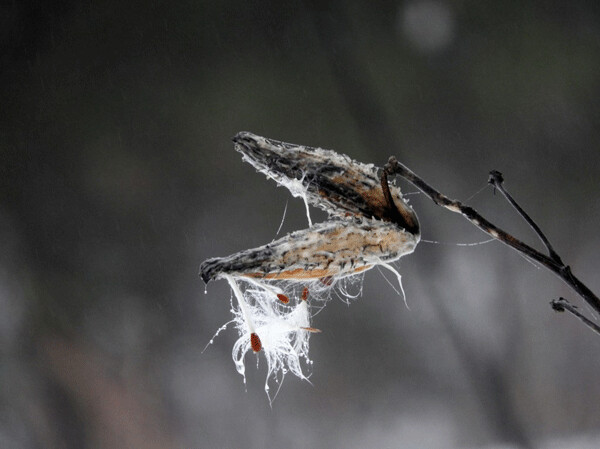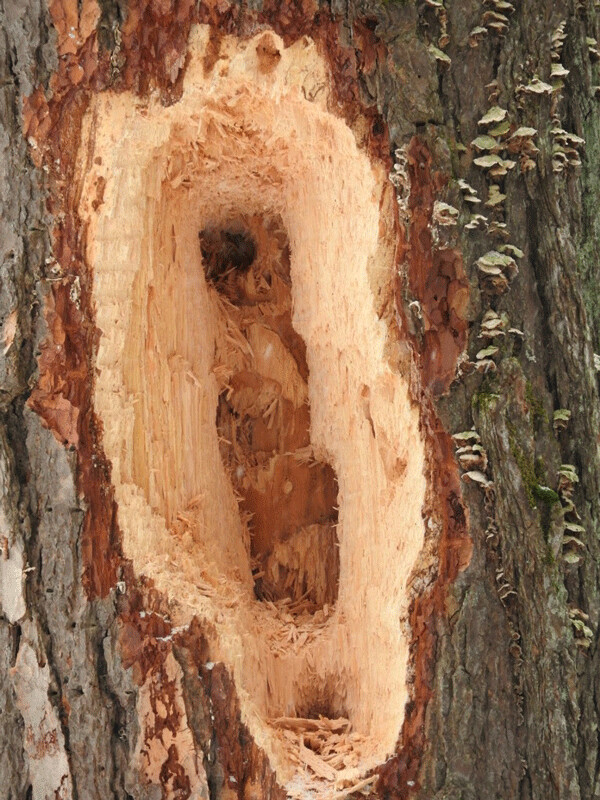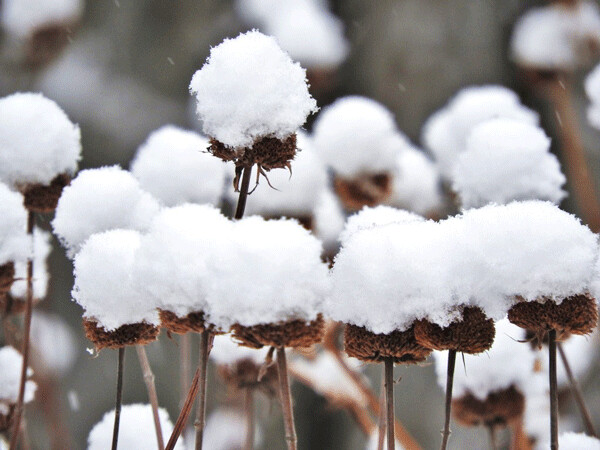“To appreciate what is seen”

Freeze. Thaw. Thunderstorm. Snow. Plummeting cold. Gradual easing. This weird weather on the edge of spring has me feeling gloomy. My favorite winter activities demand snow. My favorite summer activities demand warmth, or at least a bare, frozen trail. Even the woods feel emptier, since good tracking snow is hard to find and migrating birds have mostly paused farther south.
Lois Nestel, the Museum’s founding director, also experienced this, and it is through her wisdom that I am reminded to appreciate the pieces of nature that are still out there, if we take the time to see.
“There are times when the winter woods are so still, so empty, that walking in them, one feels like the last living creature,” wrote Lois. “Not a track mars the snow; not a sound stirs the air. Where has everything gone? It is strange because a few days earlier there may have been an abundance of life in many forms.”

“On one of those days I set out with a definite purpose in mind. I was stalking a pileated woodpecker whose calls and rapid fire hammerings seemed to come consistently from one area of trees not far from the house. These big, wary birds are not easy to pursue, so reasonable caution was necessary.”
“Silence ahead seemed to indicate that the big bird had flown, but the apprehension was dispelled as, from a pine stub ahead, there came a staccato burst and bits of flying wood. A stealthy approach, timed with the pecking, ended abruptly when a large black beak topped by bright eyes and a flame red cockade was suddenly thrust around the side of the stub. With much scuffling of feet the crow-sized black body came into view. Unaware of being watched, the big bird seemed to talk to himself with soft knocking notes as if trying to decide where to drill the next hole.”
“Some unwary movement or sound on my part suddenly alerted him. There was a brief eye-to-eye confrontation; then the broad wings spread and with a few swooping beats bore the great woodpecker into the safety and seclusion of the forest.”
“The pine stub bore evidence of much work. Large openings had been chopped through the shell and into the honeycombed interior. Breaking open a piece of this riddled wood revealed the dormant bodies of large black ants. This was what had attracted the woodpecker and would undoubtedly bring him back again. I might not be around to see, but the sound of drumming would bring to mind a clear picture of a great black bird with a flaming topknot—a memory to treasure.”
Pileated woodpeckers are a thrill to see in any season, and while they have become more common, you still can’t expect to see one on every hike. In contrast, there are beautiful, sedentary wonders which can increase enjoyment on any outing.
Lois continued, “Most people are aware of the beauty of summer flowers and often bemoan their passing as winter approaches. This need not be a cause for regret because, while much color may be lost, there continue—as seeds, pods, and capsules—many forms that rival the flowers in beauty and grace. Many of these seed containers last throughout the winter, serving as food for wildlife and pleasure for humans.”

“There is a sculptured beauty in the pods of various milkweeds and wild iris, evening primrose, cockle and Indian pipes. Delicate grace is exemplified in airy sprays of sweet cicely, papery clusters of wild hops and feathery virgin’s bower (wild clematis) twining over bushes, and in the dried grasses and sedges, each with individual form and style.”
“Many fall-blooming flowers (weeds if one must call them that) retain their form if not their color through the winter months. Goldenrod, tansy and yarrow are sepia-toned replicas of summer’s gay colors. Flowers such as asters lift clusters of tan, star-like sepals above the snow.”
“Touches of color do remain in scattered places; the dark velvety red of sumac heads, the red-orange of rose hips and the brighter red of highbush cranberries and hawthorn frozen on their shrubs.”
“To enjoy these and many other beauties of winter there are few requirements; namely these: get outside, have open eyes to see and an open mind, receptive enough to appreciate what is seen.”
Special Note: Emily’s book, Natural Connections: Exploring Northwoods Nature through Science and Your Senses is here! Order your copy at http://cablemuseum.org/natural-connections-book/.
For 50 years, the Cable Natural History Museum has served to connect you to the Northwoods. Come visit us in Cable, WI! Our new phenology exhibit: “Nature’s Calendar: Signs of the Seasons” is open through March 11.
